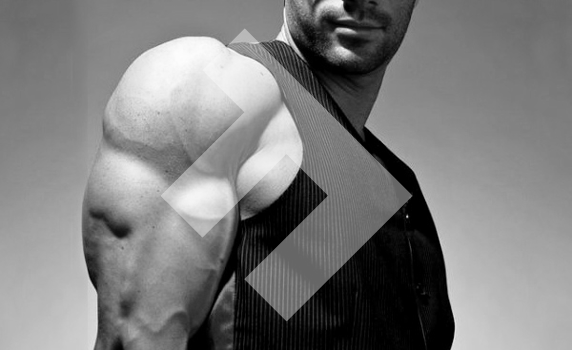It’s true to say that most people under value the importance of tricep exercises. They’d rather focus on other main muscles groups such as biceps, pecs or abs but little do these guys know that the true test of strength lies with the ability to perform tricep exercises. Below are three powerful triceps presses you’ve probably never heard of!
The JM Press
The JM Press was an exercise created by John Mark Blakley (often spelt Blakely), an American powerlifter that specialised in the bench press. JM Blakley held a number of world records and could bench 700lb raw. It’s reported that he attributed all of his triceps strength to the JM Blakely Press. Whilst the exercise was created by JM Blakley, the term was actually devised by Louie Simmons and George Halbert who saw JohnMark using the exercise as one of his main triceps assistance exercises at Westside Barbell. Over the years it’s become a popular assistance exercise for powerlifters and as you may have guessed, especially amongst lifters who train with Westside Barbell principles.
The JM press is performed with a barbell using a narrow grip. Keep your elbows out at around a 45 degree angle and lower the bar by folding your arms whilst keeping your elbows up. Feel all of the tension in your triceps as the bar lowers and you will reach a point where your tendons can’t lower the bar anymore, at which point press out using only your triceps.
JM Presses are generally performed using a barbell on a flat bench, but there are a number of variations possible such as setting the bench at an incline and using dumbbells.
The Tate Press
The Tate press is also often referred to as an ‘elbows out triceps extension’ and was made popular by Dave Tate, an expert coach for strength athletes. Dave Tate also trained at Westside Barbell with Louie Simmonds and like JM Blakely, was a competitive powerlifter. At Tates peak he could bench 610lb, deadlift 740lb and squat 930lbs. He is also the founder and CEO of Elite FTS which produces powerlifting and strength equipment.
The Tate Press is performed using dumbbells often on an incline bench for comfort and positioning. It is intended to build triceps mass and thickness around the elbow joint and much like the JM Press; it’s very popular with powerlifters. Lift up the dumbbells to the top of an incline press then lower them as you would with a normal triceps extension, but ensuring that you keep your elbows out so the palm of your hands are facing away from you when you lower and extend your arms.
The California Press
There is very little information online about the original California press but it’s believed to have been named by members of Golds gym in California USA around the 1970s. The California press is a cross between a laying triceps extension and a close grip bench press. At a first glance may appear similar to the JM Press, but it certainly isn’t. The main differences are that with a California press you do not keep your elbows up throughout the lift and you lower the bar along a much longer hybrid path (instead of a fold) that allows you to use your triceps and shoulders.
Some non-standard variations of the lift change the motion of the bar to encompass a close grip bench press. This is achieved by pulling the bar toward the chest once it is lowered and then pressing up like a close grip bench press.
![]()
 Instagram
Instagram Pinterest
Pinterest Facebook
Facebook Twitter
Twitter YouTube
YouTube




 Paul
Paul 



